Reformer Repertoire
Inversion:
Pelvic Curl - Lift and Lower
Alternate Names
Hip Lift, Hip Thrust
Derived From
Mat Pilates: Pelvic Curl and Classical Reformer: Pelvic Lift
Primary Element
Stability
Why for Primary?
To establish pelvic-lumbar stabilsation by engaging the transversus abdominis to initiate the posterior tilt of the pelvis, and using the gluteal muscles and hamstrings to lift the hips and control the pelvis in hip extension.
Secondary Element
Mobility
Why for Secondary?
To create movement through hip extension.
Tertiary Element
N/A
Why Tertiary?
N/A
Repetitions
8-10
Apparatus Setup
Suggested springs
- Number system: 3 red springs
- Colour system: 3 x red springs
- Resistance: medium
Headrest position flat unless any neck issues or the client feels more supported with the head lifted using the headrest or a slightly deflated Pilates ball or cushion. If the head is slightly lifted avoid lifting the pelvis too high so as not to load onto the neck.
Foot Bar one position down from vertical, or on many Reformers the top angled position.
Plane of Motion
Sagittal
Targeted Muscles
To create pelvis stability and initiate the posterior tilt the targeted muscles are the deep abdominal muscles transversus abdominis.
To lift the hips the primary muscles are the gluteals and hamstrings:
- Gluteus maximus
- Posterior head of the adductor magnus
- Hamstrings
Warnings
This exercise may be unsuitable for clients where inversion or spinal articulation is contraindicated or would cause pain. Also watch for clients going up too high on the neck, aim to stay as high as the back of the shoulders.
Execution
Lie supine on the Reformer in a neutral pelvis position with knees bent and heels on the foot bar in line with the ASIS (hip bones). Arms lengthened beside the torso.
Exhale to draw in the abdominal muscles, imprinting, then lifting the lower back vertebra by vertebra off the carriage. Use the hamstrings to lift the pelvis and torso higher. Inhale to maintain an imprinted or posterior tilted pelvis and lower the pelvis down towards the carriage, without moving the carriage away from park or the stopper. Exhale to engage the gluteals and press the hips back up again without overarching the lumbar spine. On the last repetition articulate the spine back to the carriage to finish.
Observations
Do a body scan of the client taking note of the following points
- Head and Neck
- Is the back of the neck long and crease free? A slight retraction of the neck with the chin tucked can help avoid straining the neck
- Pelvis
- Are the hip bones even horizontally or is the client leaning to one side?
- Is the client able to slow down and initiate the movement from low abdominals contracting then moving the pelvis back before lifting the hips up?
- Can the client keep their pelvis imprinted or in a posterior pelvic tilt the whole time, avoiding arching the lumbar spine as the pelvis lifts and lowers?
- Legs
- Are the legs evenly apart or dropping inwards? If so, place a Magic Circle or looped resistance band (booty band) around the legs above the knees to help abduct from the hips and engage the gluteals to hold the legs still
Learning Style Technique Cues
Auditory – word associations that connect mind and body
- Engage transverse abdominis to initiate the movement then flex the lumbar spine towards the carriage
- Keep the ribcage connected done towards the hips at the top of the pelvic curl or bridge position
- Double check you’re still imprinted at the top of the pelvic curl or bridge position, and when the hips are moving down towards the carriage
- Say the client’s name when you’re about to interact with them
Visual
- Image the movement being vertical with the hips moving up and down, not moving the carriage in and out or dropping the hips side to side
- You may demonstrate a part of the movement as a visual representation for the client to see
Kinaesthetic
- Feel the arms pressing actively into the carriage to stabilise the shoulder girdle
- Engage the glutes to help draw the pelvis up, and engage the hamstrings to keep the carriage in towards the stopper or park
- Reach the knees towards the foot bar as the hips lift up
Modifications and Variations
Regress the exercise by
- Reducing the repetitions and/or pace
- Working on Warm Up: Pelvic Curl
- Placing a Magic Circle or looped resistance band (booty band) around the legs just above to knees to assist gluteal activation by abducting or pressing out into the band
- Placing the fingertips of one hand on the pubic bone, the heel of that same hand on the belly button. As the pelvis tilts posterior the fingertips and pubic bone should be above the belly button. Hold that position throughout the repetitions to identify when the pelvis wants to shift forward
Progress the exercise by
- Reducing the spring setting to 2 red spring and 1 blue spring to challenge hamstring control
- Lifting the arms towards the ceiling with the palms inwards to connect in the shoulder girdle but without the assistance of the arms pressing down into the carriage
- Lifting one leg up to the tabletop position, or extending towards the ceiling, and working through a single-leg variation
- Holding a dumbbell or weight onto the front of the pelvis to challenge the ability to keep the pelvis imprinted or tilted posterior
- Moving to the balls of the feet on the bar and lifting the heels up to increase muscle engagement in the back of the legs
- Working towards Inversion: Pelvic Curl – Leg Extension
- Working towards Wunda Chair Inversion: Pelvic Curl – Hamstring Curl
Series and Transitions
This exercise is part of the Inversion series which includes one other exercise in the progressive repertoire. The Inversion series can also be found in the Wunda Chair, Cadillac and Mat Work repertoire.
Transition to Inversion: Pelvic Curl – Leg Extension by returning to a supine position on the carriage, ready to lift back up again into the bridge position.

